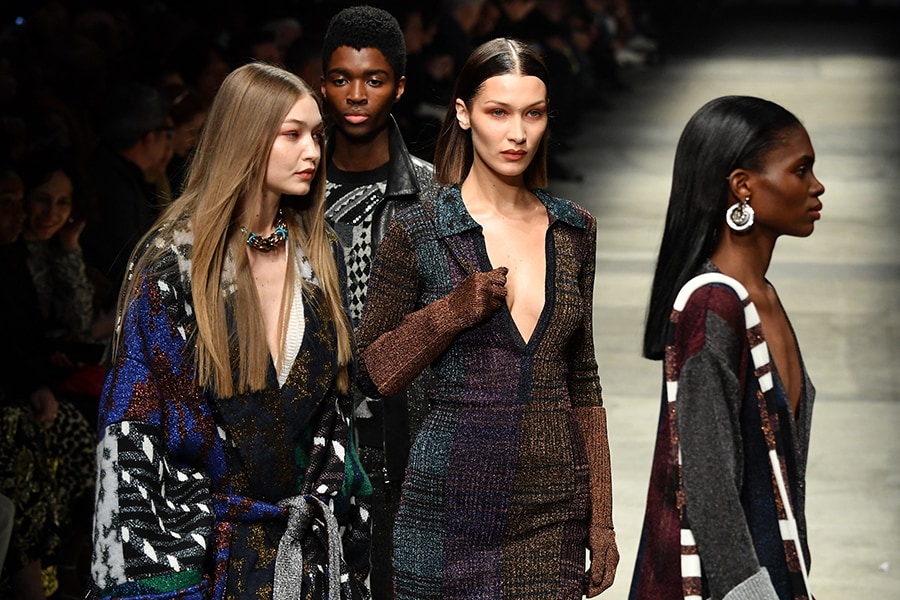
Is the reign of top models coming to an end?
The recent crop of star models seem to have all but deserted the fashion sphere
 A ubiquitous presence on the catwalk before the pandemic, the Hadid sisters have recently had their place in the spotlight stolen by a new generation of models.
A ubiquitous presence on the catwalk before the pandemic, the Hadid sisters have recently had their place in the spotlight stolen by a new generation of models.
Image: Andreas Solaro/ AFP
Once ubiquitous on the catwalks and in the advertising campaigns of the biggest fashion houses, the recent crop of star models seem to have all but deserted the fashion sphere. Take the latest Balenciaga campaign, for example, which sees the most coveted models of the planet replaced by Isabelle Huppert, Justin Bieber or Kim Kardashian. So what's going on? Could it be a case for the fashion police?
They were everywhere! The Hadid sisters—Gigi and Bella—more or less reigned as queens of fashion until 2020, the year that brought the covid-19 pandemic. Darlings of the biggest fashion houses, the two daughters of the former model Yolanda Hadid were a ubiquitous presence on the catwalks, and even more so in the ads of major brands. The pandemic, through the cancellation of physical fashion shows, seems to have changed the game, even if that's not the only factor at play. More inclusive, and increasingly focused on all things digital, brands are now turning to voices, more than to bodies— although star models also have things to say—as much as to influencers committed to causes, with whom the public identifies, not to mention virtual models. All of which makes us wonder what's in store for the future of modeling, which is nevertheless inseparable from the fashion industry.
From supermodels to model influencers
Rewind back to the '90s and the rise of the supermodels. For the first time, a whole generation of models —such as Cindy Crawford, Claudia Schiffer, and Naomi Campbell, among others—experienced an extraordinary level of fame, becoming icons much more popular than the clothes themselves, and transforming the image of modeling forever. This was followed by a slew of star models, such as Kate Moss—a star of stars—whose personality transcended the norms imposed in the industry. That's a rare occurrence, however. Gradually, these supermodels have given way to another generation of models, who have climbed the career ladder while notching up followers on social networks.Kendall Jenner, Bella and Gigi Hadid, Hailey Bieber, Emily Ratajkowski, and almost all the Victoria's Secret Angels, are part of this generation of model influencers, highly (perhaps almost too much) in demand among brands. The Hadid sisters particularly distinguished themselves between 2017 and 2019, rising to the top of the game as the most coveted models, sweeping up titles like model of the year, and as popular with the public as with the industry (one rarely going without the other).







